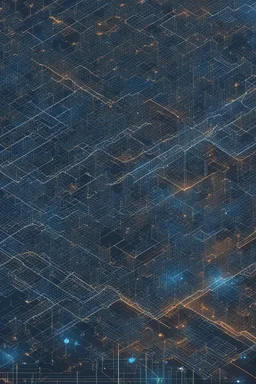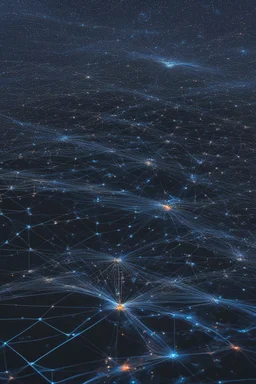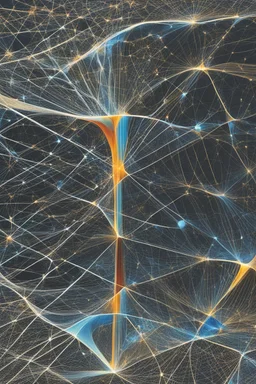![Placeholder: [mahematics] In the context of universal approximation, two approaches can achieve similar results but with different parameter requirements. The overall system comprises data, architecture, and a loss function, interconnected by a learning procedure. Responsibilities within the system include acknowledging noisy or biased data, addressing the need for a large number of parameters in the architecture, and overcoming the principal-agent problem in the choice of the loss function.](https://img.stablecog.com/insecure/64w/aHR0cHM6Ly9iLnN0YWJsZWNvZy5jb20vNzE2NTdhMmYtNWI1Ny00MGM5LWFmMzgtODIxNTNjNDA5NmJiLmpwZWc.webp)
![[mahematics] In the context of universal approximation, two approaches can achieve similar results but with different parameter requirements. The overall system comprises data, architecture, and a loss function, interconnected by a learning procedure. Responsibilities within the system include acknowledging noisy or biased data, addressing the need for a large number of parameters in the architecture, and overcoming the principal-agent problem in the choice of the loss function.](https://img.stablecog.com/insecure/1920w/aHR0cHM6Ly9iLnN0YWJsZWNvZy5jb20vNzE2NTdhMmYtNWI1Ny00MGM5LWFmMzgtODIxNTNjNDA5NmJiLmpwZWc.webp)
@generalpha
Prompt
[mahematics] In the context of universal approximation, two approaches can achieve similar results but with different parameter requirements. The overall system comprises data, architecture, and a loss function, interconnected by a learning procedure. Responsibilities within the system include acknowledging noisy or biased data, addressing the need for a large number of parameters in the architecture, and overcoming the principal-agent problem in the choice of the loss function.
doubles, twins, entangled fingers, Worst Quality, ugly, ugly face, watermarks, undetailed, unrealistic, double limbs, worst hands, worst body, Disfigured, double, twin, dialog, book, multiple fingers, deformed, deformity, ugliness, poorly drawn face, extra_limb, extra limbs, bad hands, wrong hands, poorly drawn hands, messy drawing, cropped head, bad anatomy, lowres, extra digit, fewer digit, worst quality, low quality, jpeg artifacts, watermark, missing fingers, cropped, poorly drawn
2 years ago
Model
SSD-1B
Guidance Scale
7
Dimensions
3328 × 4992
![[mahematics] In the context of universal approximation, two approaches can achieve similar results but with different parameter requirements. The overall system comprises data, architecture, and a loss function, interconnected by a learning procedure. Responsibilities within the system include acknowledging noisy or biased data, addressing the need for a large number of parameters in the architecture, and overcoming the principal-agent problem in the choice of the loss function.](https://img.stablecog.com/insecure/256w/aHR0cHM6Ly9iLnN0YWJsZWNvZy5jb20vZDJmYjgwZDgtMTQxZC00MmZiLTkwZTktODZmNWRkMzMyYjI2LmpwZWc.webp)








![digital echoes and virtual realms, Juliette and Romeo's fateful connection transcends the boundaries of a high-tech electronic universe. Juliette, lost in sorrow, weeps in a holographic simulation as Romeo's lifeless avatar rests upon a glowing data tomb, their love immortalized in lines of code. [William S. Burroughs' "The Electronic Revolution"] The curse woven into their digital DNA dictates that Juliette, in her grief, will unknowingly trigger a fatal algorithm, linking her fate to Romeo i](https://img.stablecog.com/insecure/256w/aHR0cHM6Ly9iLnN0YWJsZWNvZy5jb20vNWE0ZmY0NTktYmFlNi00NWYzLWIwMjItOTM2NzgzZGM4OGVmLmpwZWc.webp)

![[1960’s stop-motion animation style] In the glitched transmissions of the neodada spaceship, enigmatic whispers hint at obscured truths within the hyper-reality's quantum tapestry. Metallic forms emerge from darkness, their sleek contours gleaming malevolently under luminescent panels, moving with a cold, calculating intelligence through the artificial dusk. Cybernetic machines, a fusion of steel, flesh, and circuitry, harmonize in a symphony of whirring gears and processors within the cosmic sp](https://img.stablecog.com/insecure/256w/aHR0cHM6Ly9iLnN0YWJsZWNvZy5jb20vZWZlNDM4NTctYzhhNS00OGZiLWE4NjAtZjk2ZWJjOTVjNGY3LmpwZWc.webp)